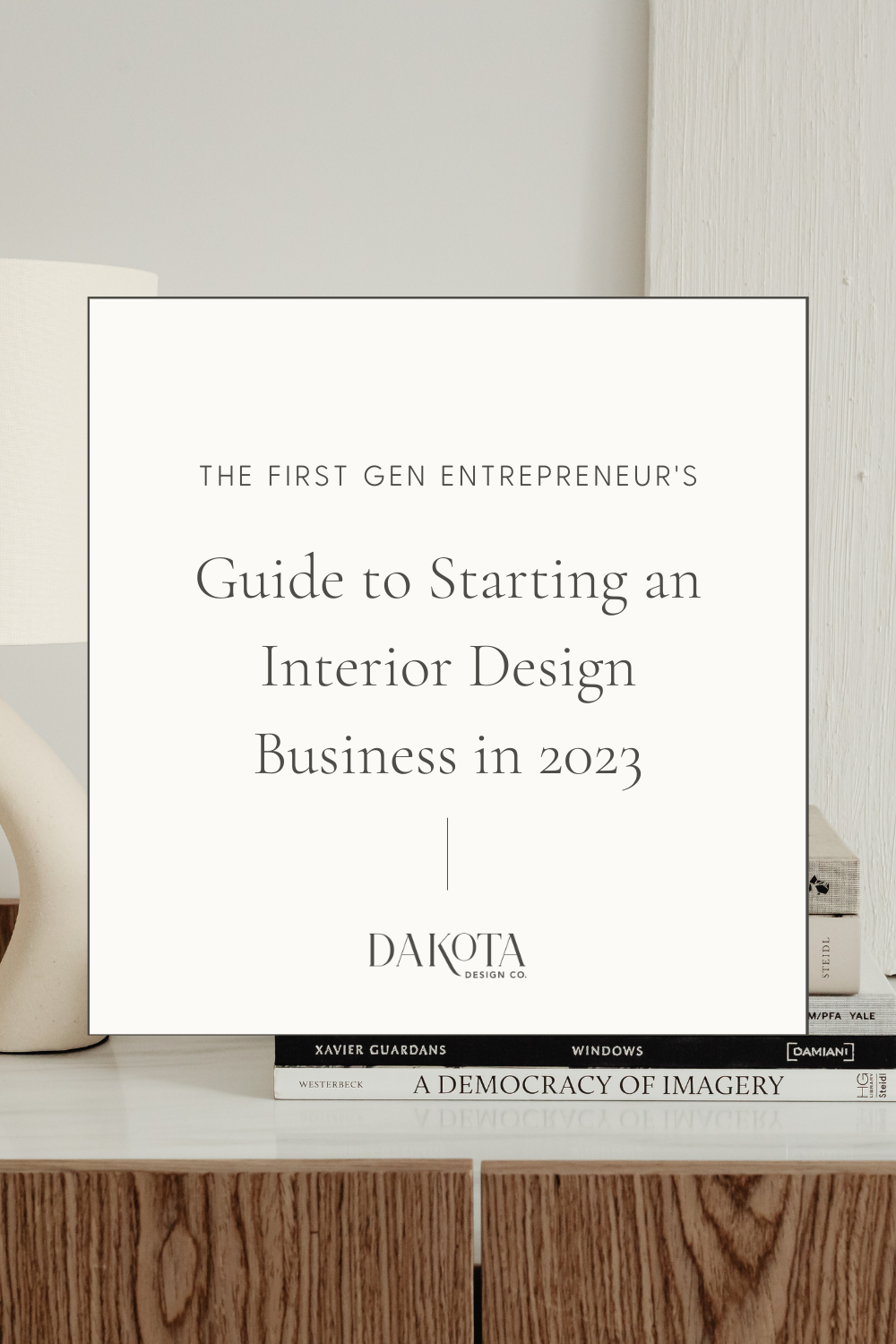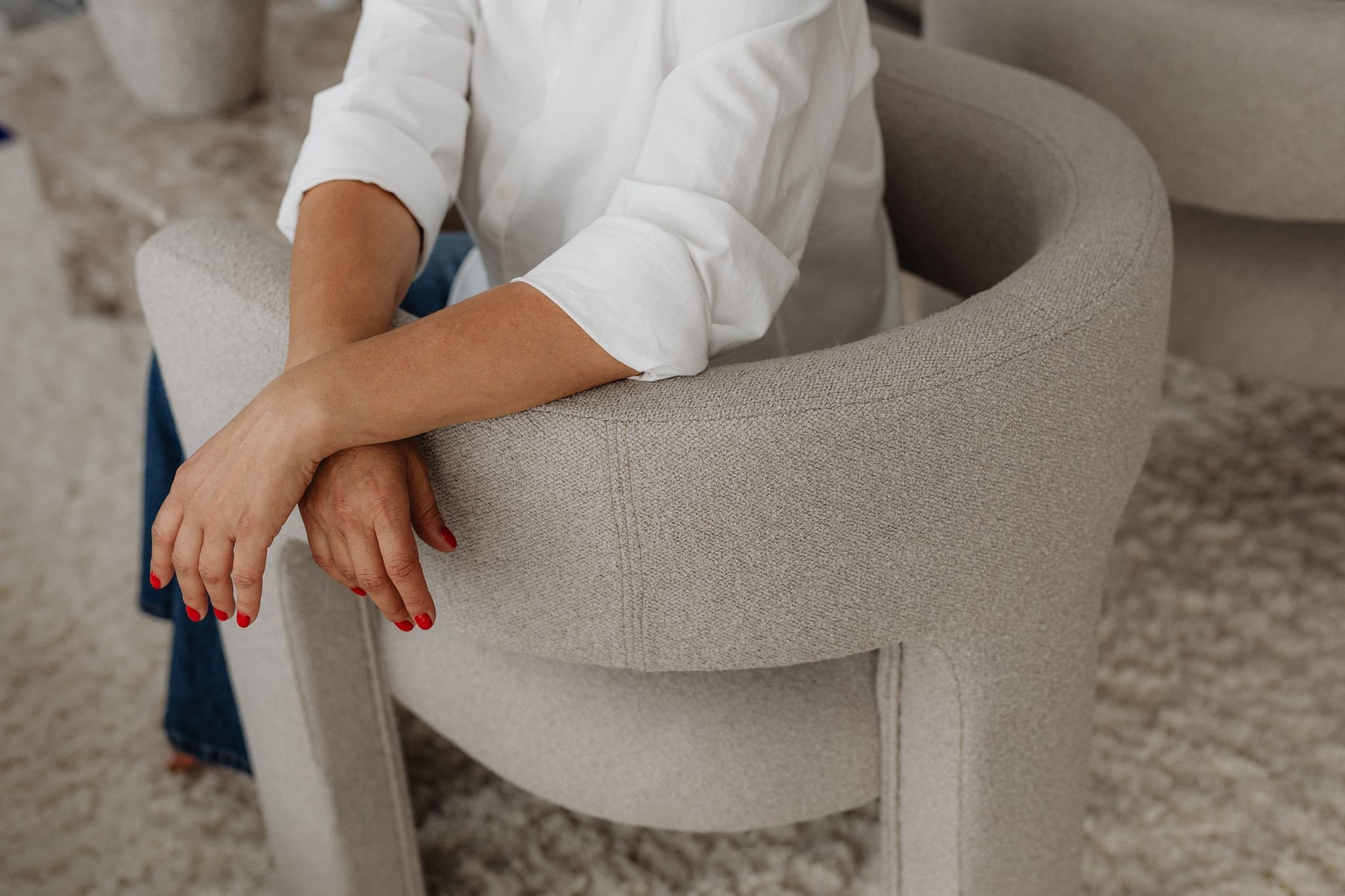The First Gen Entrepreneur's Guide to Starting Your Own Business
Updated April 2023
As a first-generation entrepreneur, there was no playbook or game plan for starting my own business. Sure, my parents owned their own companies (my dad owned a restaurant & catering business and my mom had a web design company) and I previously had a wedding and event planning company. But this time around as I ventured into consulting and done-for-you-services, it was all about testing, learning, and trusting (myself, my team, this vision). In this post, I’m sharing some tips for starting a business as a first-generation entrepreneur, what I’d do again, and what I’d do differently. If you’re a new interior designer looking to start your design business on solid footing, be sure to check out Design Business Foundations: Start Your Interior Design Business with 1:1 Support.
Tip #1: Focus on your clients from the start (and never lose that focus!).
By far, my biggest piece of advice for new business owners is to focus on serving their clients well and learning exactly what they need. This will tell you everything you need to know for your business: how to market, where to market, what software you need, what services or products to offer, and how to price those offerings. From there, everything else will fall into place much more easily.
As your business gets off the ground, never forget about your clients. They’ll always be the most important piece of your business.
Have conversations with them. Listen to them. Hang out where they are so you can get to know them. Create products and services based on what they tell you, not what you think they need.
Tip #2: Pound the pavement and get hands-on experience asap.
My message to first-time entrepreneurs is always the same: dive into the work as soon as possible. Right off the bat, do what you can to start working with clients and gaining experience, even if it means working for free and trading services, billing a lower hourly rate while you’re learning, or simply saying YES to one-off projects.
From there, you’ll learn how to structure and price your services and uncover your work style and preferences i.e. projects you actually like working on vs. ones you don’t.
Tip #3: Don’t invest in branding and copywriting too early.
You all know I love writing and believe solid copy and elevated branding are key to taking your business to the next level. BUT — I strongly recommend waiting until you’re pretty set with your clientele, niche, and service offerings before you invest in your website, branding, or copywriting. If you invest in these too early, you may find out you actually don’t like working with a certain type of client or doing a certain type of project (this happens A LOT!!) and then you’ve spent that money creating an online brand and voice that calls those people and projects in - OH NO!!
Once you have some experience under your belt, you’ll be able to nail down your clientele, niche, and offers, so then, investing in web design, branding, and copywriting will serve you well for years and years to come.
If you’re telling yourself you need a fancy website or the most perfect copy to sell or start working with clients, you’re wrong. For many of our established designers, those investments came much later in their careers. Just get out there and help your people!!
Personal story: I originally invested in a WordPress template (WORDPRESS!!! OH MY) and spent SO MUCH TIME twiddling with it and trying to figure out how to make updates and changes. It was such an incredible waste of time and it was actually holding me back from reaching out to potential clients and marketing my business. I thought, “Well my website must be perfect with the perfect services and the perfect copy before anyone will work with me.” and guess what, that was false! I started talking to designers in my area and booked my first three clients without a website or a fancy sales page or expensive branding.
AFTER working with those clients I changed EVERYTHING I had already written for my original website. Thank goodness I waited to invest in branding and copywriting until that point. PHEW!
Tip #4: Set yourself up as a real business.
Legal, accounting, and professional matters can be some of the most stressful when it comes to starting a business, especially if you don’t have any background in those areas. But, if you don’t have the right pieces in place, you risk looking unprofessional to clients AND if your business does experience a growth spurt, it will be much harder to backpedal and get these items set up when you’re slammed with client work. (For real, bookkeepers we work with charge thousands of dollars for Quickbooks clean-ups–it’s so important to set it up and use it correctly from day one).
Set yourself up for success from the start by setting up your business properly through all of the proper channels. Want 1:1 support from me and my team as you set up your business? Check out the Design Business Foundations Blueprint here.
Set up business bank accounts and apply for a business credit card
Establish your business as an LLC
Apply for a TIN or EIN
Set up a professional email (yourname@businessname.com)
Apply for a resale license (for interior designers), read this post
Use legal contracts for your services, like this one
Use financial software for designers
Tip #5: Find your dream team.
If there’s one thing I can say with complete confidence, it’s that finding a team of people you trust is the key to success. There is no single go-to source to walk you through all the things you need when starting and running a business, so it’s important to find trusted sources to make sure you are doing things properly (like attorneys, accountants, trusted advisors, the list goes on).
When I started out, I invested in professional advisors to help with the big picture (an attorney, a CPA, etc.). This gave me a ton of confidence and made me look quite professional if I do say so myself.
I also always knew I would have a team so in the very beginning I focused on making a process for everything I did that I knew I would eventually hand off. It made hiring my first team member so easy because I knew exactly what she would be doing and she knew exactly how to do what I needed her to do.
Yes, creating processes for your business takes TIMEEEEEEEEEE but if you’re the bottleneck and everyone is waiting on you to get their work done, then I highly recommend investing the time ONCE in creating processes for your team so they can completely own their tasks.
For me personally, having a team helping with the day-to-day allows me to focus on serving my clients with confidence and affords me the time and space to make decisions about the direction of the company.
Tip #6: Trust yourself and take fast action.
A unique challenge many first-time entrepreneurs face, and that I’ve faced as well in my time as a small business owner, is understanding (and embracing) that you can structure your business however you want (as long as it’s ethical of course).
Because there are a million ways you can do things, and you, the boss, get to decide - it can feel pretty intimidating to bear all the responsibility all the time.
Learning to trust yourself AND learning to be okay with making mistakes is critical to being a business owner. I make mistakes all the time. Then I learn from them, make things better, put checks and balances in place so they don’t happen again, and move forward.
As the CEO you have to be comfortable with making decisions quickly, trusting yourself, and moving forward (even when you’re not 100% sure). Taking action is the key to growth!
Tip #7: Be clear on where you’re going.
You must know where you’re heading, or at least have a general vision of what the future looks like for your company and for yourself as the owner. If you don’t have a single destination, you will spend a lot of time going in the wrong direction.
My vision for this company started with me and my environment:
What did my surroundings look like?
Who were my coworkers?
What kind of work was I doing?
How did I feel while doing the work?
What did clients say about working with me?
Once the vision was clear, it was much easier to design my business so it aligned with what I wanted it to look like.
I know this has been said a million times, but let me give a quick example. If you want to go on vacation, but you don’t know what kind of vacation you want or where you want to go, how will you:
Know what to pack
Know how much time to take off
Know what flights to book
Know what hotel to book
Know who to invite
Know what reservations to make
But if I say, “I want a relaxing girls weekend somewhere warm and sunny”, your travel planning becomes so much easier and the entire trip falls into place much more quickly.
So, be clear on what you want for your business, for yourself, for your life. And make sure the choices you make align with that vision.
Want more tips like these? Be sure to join The Weekly Install and get advice and resources for designing a streamlined business every Friday morning!
Looking for more? Keep reading:













